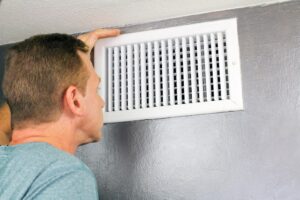Originally published in October 2016, updated March 2020.
When homeowners in Bath, Pennsylvania, need to alleviate asthma symptoms, identifying and combating indoor allergens becomes essential. If you or a loved one suffers from asthma or allergies, these HVAC tips can help keep symptoms in check.
Replace Your Air Filters to Remove Allergens
Your home’s air filters are the main line of defense between you and indoor pollutants. Inspecting your air filters once a month will allow you to quickly spot any clogs or debris keeping your filters from functioning properly. Most air filters are designed to be replaced every 90 days or so, but if you suffer from asthma it’s a good idea to change them more frequently.
Install an Air Purifier
Consider installing an Infinity® Air Purifier GAPA in-line with your heating and cooling system. It uses Captures and Kills™ technology to trap up to 95% of pathogens down to .30 micron on the filter. It then uses an electrical charge that bursts the cell walls of pathogens or makes then inert. Since your HVAC system circulates the air in your house up to 8 times per house, an Infinity Air Purifier will clean your air of pollen, smoke, bacteria, viruses, and other pathogens. Independent testing has proven this Carrier’s Infinity air purifier effective against 13 pathogens plus a common household fungus. Installing an air purifier ensures you and your family will be breathing clean and healthy air.
In addition to changing the air filters, you also want to invest in high-quality filters with adequate MERV ratings. The higher the MERV rating, the more effective the filter is in trapping particles. If in doubt, ask your HVAC technician for recommendations that do not exceed the MERV rating specified for your particular system.
Clean the Exterior Unit
Your home’s HVAC unit pulls air from the outside, which then circulates throughout the home. When your exterior unit is plagued by dust, dirt, pollen, and other debris, those allergens may find a way inside. To boost your home’s indoor air quality, make sure your exterior unit and the area surrounding it is always clean and free from debris.
In addition to maintaining your exterior HVAC unit, you should also sweep and vacuum around the indoor unit, as well.
Dust the Vents to Remove Allergens
Allergens frequently accumulate in HVAC vents, but you can easily address this issue by dusting and vacuuming all vents throughout your home on a regular basis. When checking the vents, you should also be on the lookout for any signs of mold, which is another major asthma trigger. If the vents or ductwork show any sign of mold, you may need to schedule a duct cleaning.
Reducing indoor allergens can go a long way toward alleviating your asthma or allergy symptoms. For more indoor air quality solutions, call Sullivan Oil & Propane.
Image provided by Shutterstock



